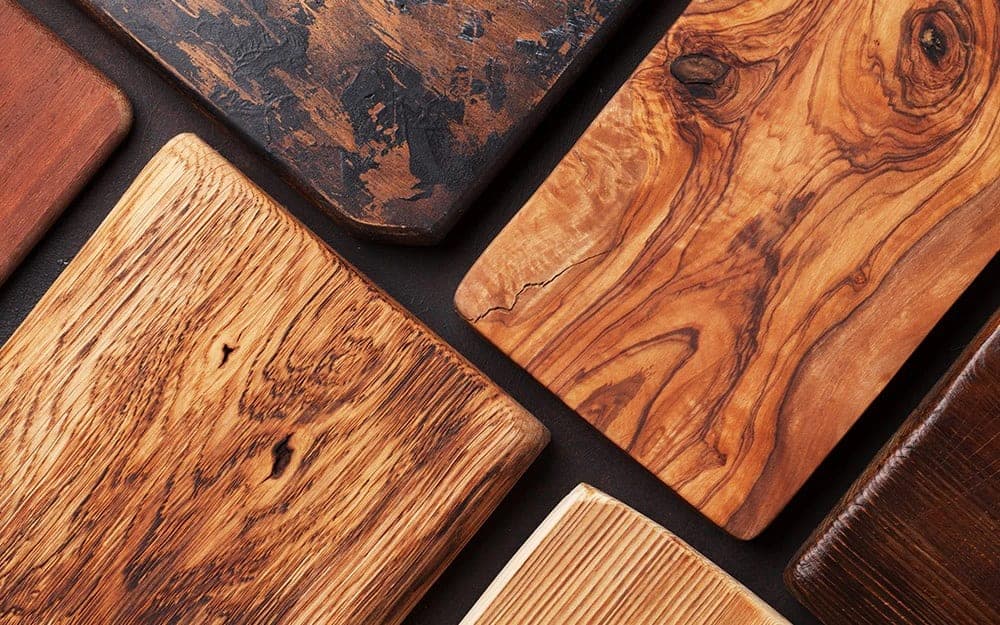A high-quality cutting board should be a part of every functional kitchen. Not only can you use the product as a cutting board, but you can also use it as a serving tray or even a space to prepare food on.
Since cutting boards are so versatile and essential to the cooking process, it is good to do some research before investing in one. Some boards can be expensive, and the last thing you want to see is a warped cutting board on your counter.
So what is the best cutting board to choose?
Wooden cutting boards are some of the best out there; they are more gentle on your knives, relatively affordable, and are more resistant to scratches and indents.
Today, we will be covering the best wood for cutting boards. By the end of this guide, you will know what kind of wood will be best for your cooking needs.
Let’s dive into it.
Maple
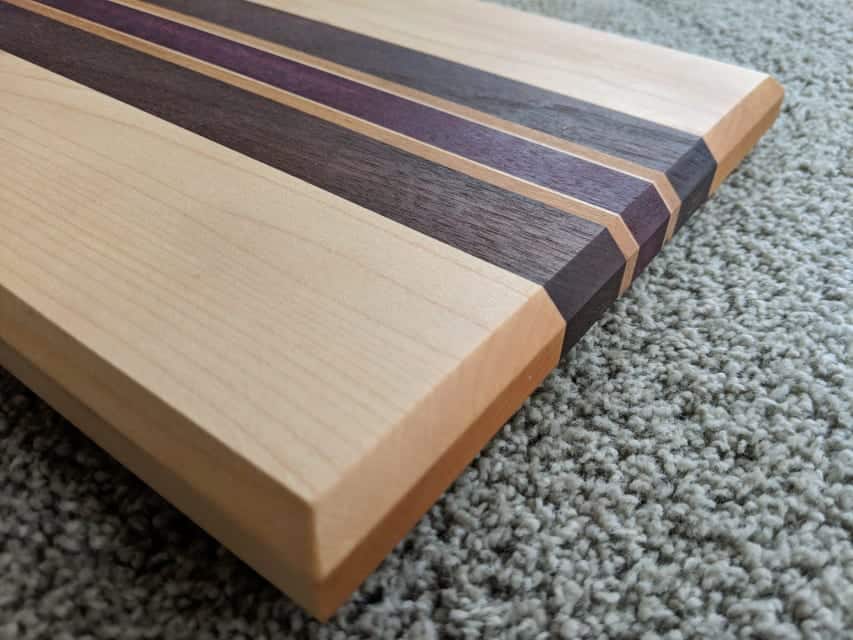
Many chefs swear by maple and say it is the best wood for cutting boards.
You will find both hard and soft maple on the market. If you are going for a board with more impact resistance and is not easy to scratch, hard maple will be a good choice. Even though it is hard, it still won’t dull your knives at all.
Hard maple also has very small pores. This feature is what makes this material so resistant to bacteria, stains, and moisture.
One of the main downsides of maple is that stains are pretty hard to get out and are easily visible due to the wood’s light color.
When it comes to maintenance, you can get away with conditioning your maple cutting board bimonthly. If you want to keep it in tip-top shape, condition the wood every month.
Cypress
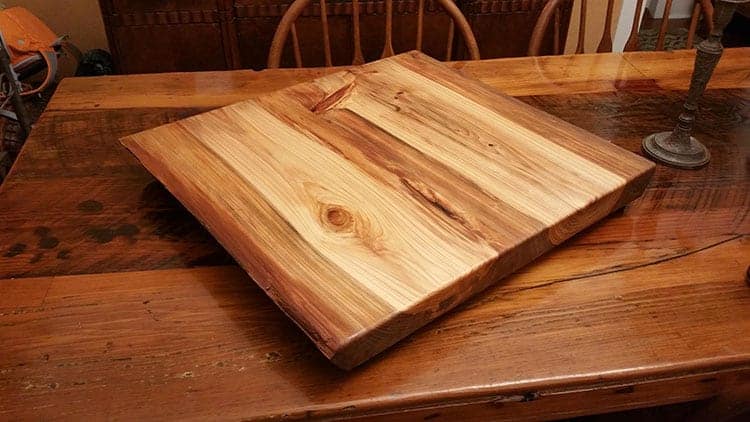
One of the main benefits of using cypress for cutting boards is that it is very resistant to mold and bacteria. The wood itself has ingredients that actually kill bacteria, so the cutting board is a lot less likely to spread food poisoning.
The same chemical that is responsible for killing bacteria also has the ability to kill odor as well. This chemical greatly reduces the odor of ammonia in the cutting board, which is why so many chefs prefer this material.
Cypress also does not damage the edge of your blade at all. The sharpness of your kitchen knives will last longer when you use cypress cutting boards.
One final thing to note about cypress is the smell. If you like the smell of fresh citrus that reminds you of taking a walk through a lush forest, then cypress will be a good choice. If you prefer a cutting board without a strong smell, check out some other options on the list.
Walnut
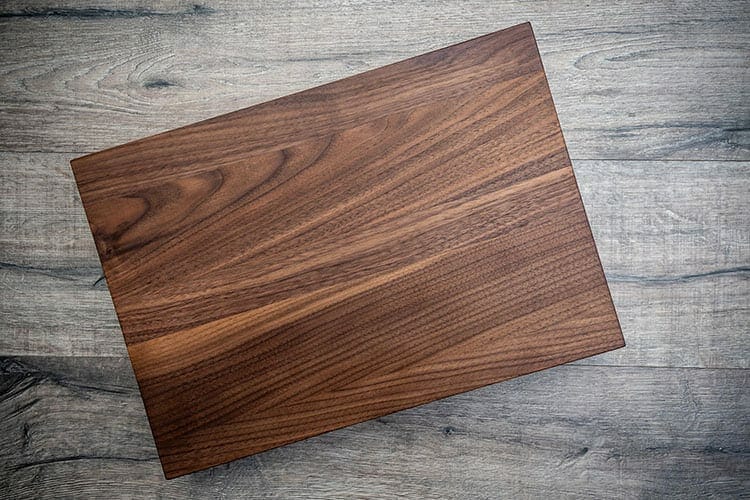
Many believe that walnut is the best wood for cutting boards. One of its main reasons for appeal is that walnut is dark wood. What this means is that you won’t have to worry about stains. Even if you get a few stains that are impossible to remove, you will barely be able to notice it.
Furthermore, walnut is technically a type of hardwood. It will be strong enough to take some heavy impacts from kitchen blades while preventing your favorite knives from dulling.
It is worth mentioning that walnut is not as hard as maple. So if hardness is what you are going for, this shouldn’t be your first choice.
Finally, walnut is food safe, so you won’t have to worry about any possibly toxic chemicals leaching into your food.
Teak
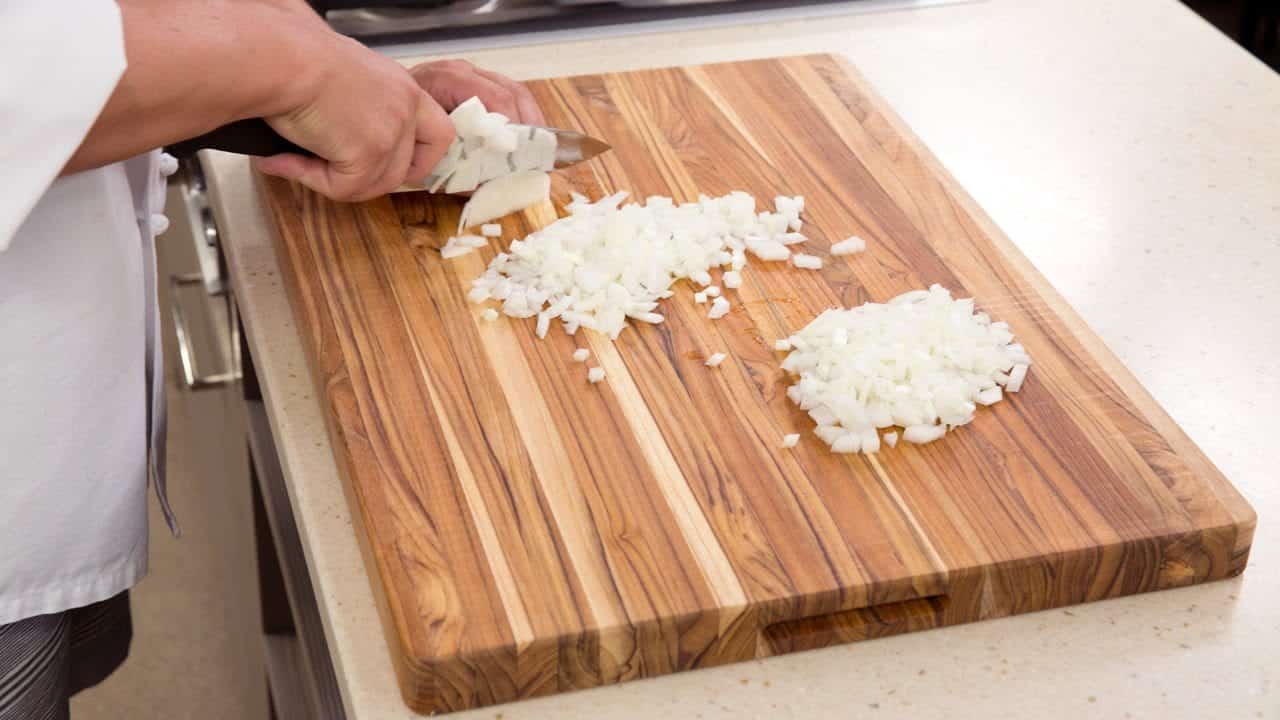
Teak is another wood that is good for cutting boards. The material holds up relatively well to dents and scratches, better than walnut but not as good as cypress, maple, or beech.
This material is a closed-grained, tropical hardwood which can make it a bit pricey. However, it is the least likely to shrink compared to many other options on the market.
There are a few downsides to keep in mind when it comes to teak wood. First of all, it has a high silica content. This characteristic can increase the rate of dulling. Your knives will not stay as sharp for long if you use a teak cutting board.
Furthermore, this kind of wood has large pores. This will make it easier for bacteria to leech into the wood. It will also absorb moisture and stains more easily.
Beech
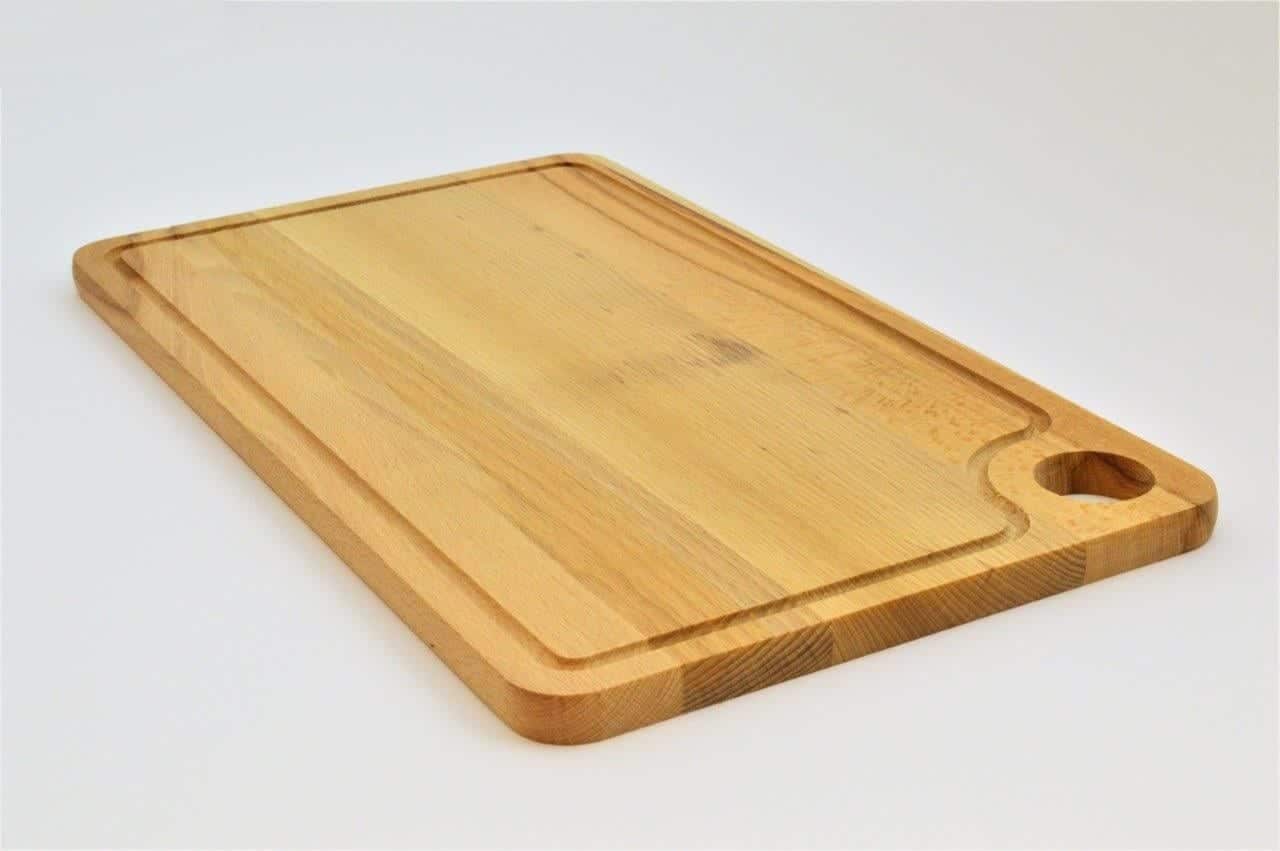
Beech is the best wood for cutting boards due to a few factors.
First of all, beech is not hard on your blades. Kitchen knives do not dull quickly when working with beech wood. Secondly, this cutting board material has high impact resistance. You won’t find that it scratches or cracks easily.
One of the best features is that it is resistant to bacteria. The wood has small pores, which makes it hard for bacteria to penetrate it. Due to this characteristic, beech is also great at resisting stains and moisture.
There are a few downsides, though. Beech is a light pink/salmon color, so it will be quite easy to spot stains if they do occur. Furthermore, beech is a cheap material. You will need to condition it at least once a month to upkeep it.
Acacia
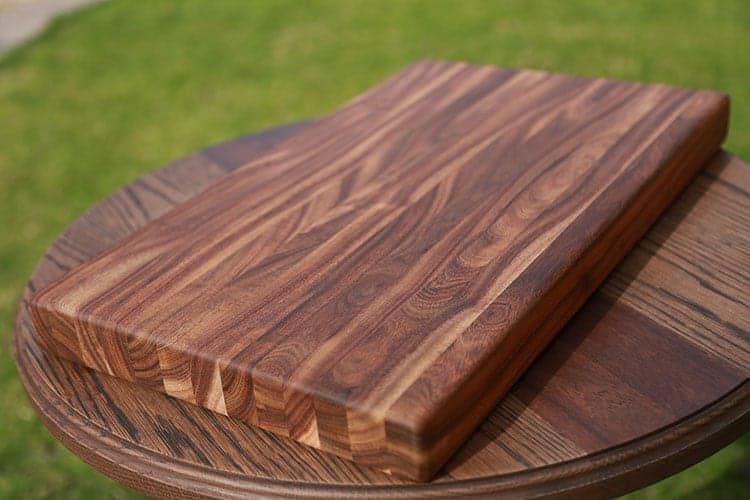
Acacia is not very common when it comes to cutting board material. However, it is popular in some kitchens for a reason.
Acacia wood is one of the strongest woods for cutting boards. This material can last for years and can withstand many hard impacts without breaking or cracking.
What’s even greater about this material is that you can find it in multiple colors. If stains are a big deal for you, you can buy dark acacia wood if you like.
Cherry
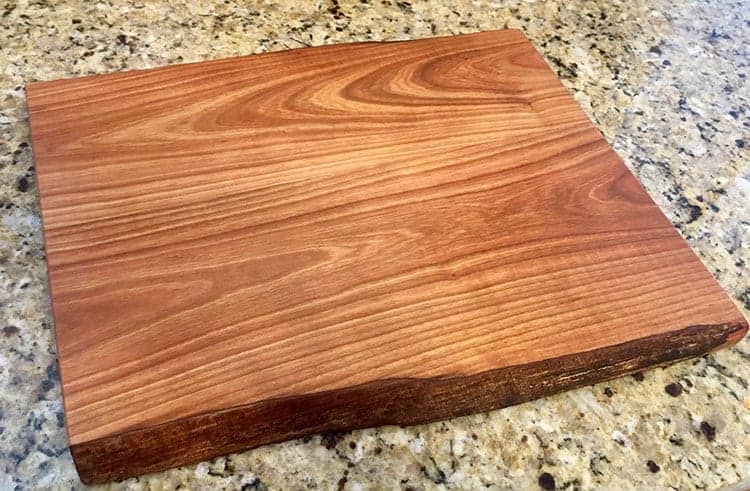
Many people choose cherry simply because of its beautiful red-brown color. You won’t be able to find a more aesthetically pleasing color in any other cutting board material.
As pretty as cherry wood is, it also has a few other positive characteristics. When it comes to weight and shock resistance, cherry wood is the best of both worlds. The wood is not too heavy and has medium impact resistance.
This material is hard enough to prevent cracking but soft enough to protect your kitchen knives. It is also pretty flexible, which will lower the chances of snapping.
Bamboo

Even though bamboo is technically not wood, it is still a favorite amongst many.
If you are going for a more environmentally friendly material, this will be it. Bamboo does not require any additional chemicals to grow, as other materials may need. Furthermore, the plant grows exceptionally fast and can reach maturity in three years. (To compare, maple trees can take over 30 years to fully mature.)
Bamboo is very hard and is highly shock and impact resistant. It can repel water and does not scratch easily. However, your knives may take a bit of a beating with a bamboo cutting board.
If you are looking for an aesthetically pleasing cutting board to cut light items such as bread on, bamboo will be the way to go.
Different Types of Wood Cutting Boards
Now that you know the best wood for cutting boards, it is time to do some shopping. However, there will be a few features other than the wood material you will have to think about.
For instance, there are three main types of wooden cutting boards. Some grains will be better than others for different purposes. Let’s see what one is most suited for you.
Edge Grain
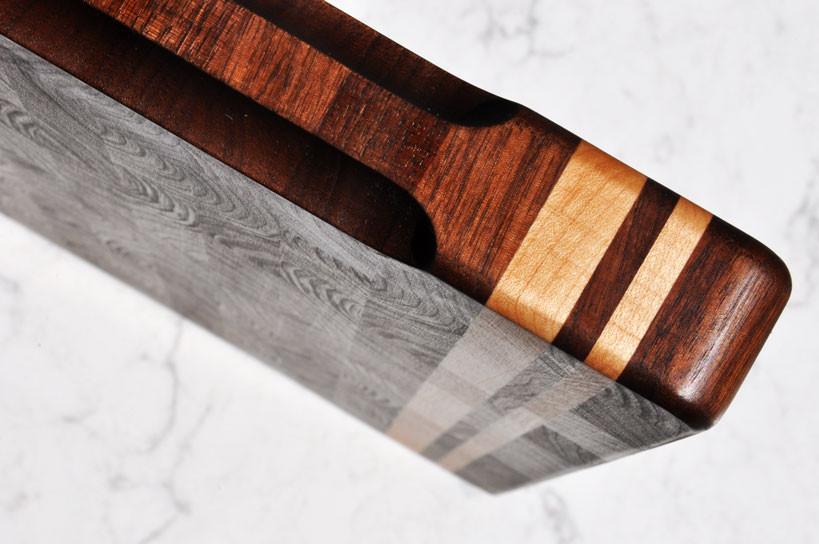
Edge grain cutting boards are constructed by gluing the faces of wood boards together. If you look at an edge grain board from the surface, you will see multiple thin lines, which are the sides of the glued wooden boards.
Many kitchen experts say that edge grain boards are the best of both worlds. They are not too expensive, and they do not warp as bad as other boards on the market. This factor is due to the board’s thickness; thicker boards tend to warp less.
Another benefit of edge grain is that they have a lower risk of cracking and splitting than other boards.
The one downside of edge grain boards is that you can see knife scratches more easily.
End Grain
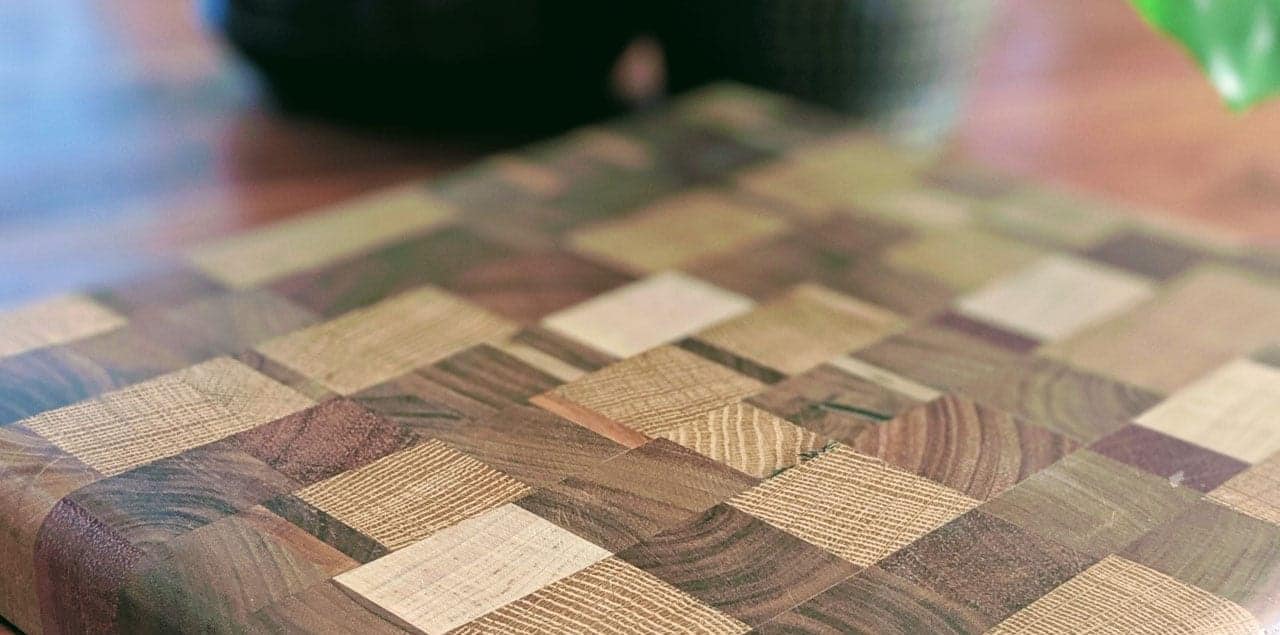
End grain cutting boards tend to look like traditional butcher block boards. The distinguishing feature of end grain boards is that the end grain of the wood faces the surface.
These kinds of cutting boards are some of the most high-quality boards out there. End grain boards do not receive nearly the same amount of damage as others. The board can take thousands of slashes from a kitchen knife and still hold up fine.
Furthermore, due to the direction the grain faces, these boards do not produce any splinters. You won’t have to worry about nicking your finger on a sharp piece of wood while washing these.
End grain boards are also pretty thick, so you won’t experience any warping. The chances of the board cracking are also extremely low, but it can happen.
One thing to note about end grain boards is that craftsmen will usually have to make these by hand, which is why they are the most expensive type of cutting board. Each board contains multiple pieces of wood, so it takes some time and experience to build it.
Flat Panel
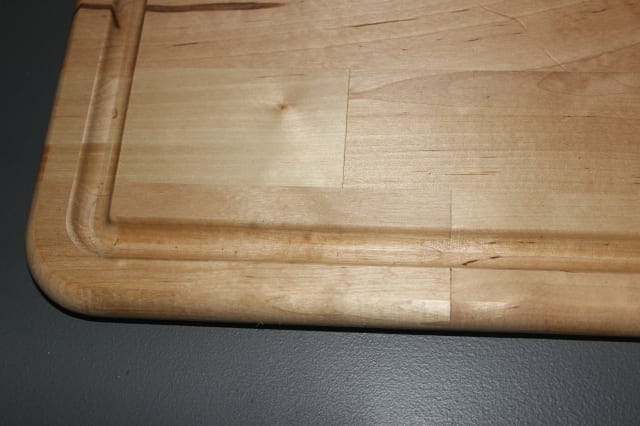
Flat-panel boards are widespread and are most commonly mass-produced since they are the easiest to make. To make a flat panel board, the edges of wooden boards are simply glued together.
The main downside of flat panel boards is that they are more likely to warp or even crack over time. These boards warp because when the boards gain and release water, the wood panels move and eventually wear out over time.
When you buy your next cutting board, this will be something to keep in mind since cutting boards inevitably come into contact with water almost daily. However, the above construction methods (edge grain and end grain) don’t react as much with water.
What Factors To Look For
There are a few reasons why these cutting board materials are the best wood for the job. Let’s take a look at all of the different factors that make a good cutting board material. Whenever your out shopping next, keep these in mind.
- Toxicity: Most plants and wood are considered to be food-safe if they produce edible fruits and leaves. However, some woods can leach toxic chemicals that are harmful to ingest. Keep this in mind when looking for a new cutting board material.
- Hardness rating: All wood will have a hardness rating. Woods with higher hardness ratings will be more resistant to scratches and impact. Many chefs prefer a medium hardness for cutting boards.
- Porosity: Porosity level is how big the pores are in the wood. Bigger pores will absorb more bacteria and chemicals than wood with smaller pores.
- Conditioning: Conditioning your wood using products such as beeswax can prevent the wood from shrinking, cracking, or warping. Different kinds of wood will require certain conditioning schedules.
FAQs
Is Proper Maintenance Important for All Types of Hardwood Cutting Boards?
Yes, proper maintenance is vital for all types of hardwood cutting boards. While the type of material you go for will influence how often and intensely you’ll have to care for these kitchen boards, the fact remains that every single hardwood board requires good maintenance if you want it to last.
Industry-standard popular woods like walnut wood, teak wood species, and maple wood cutting boards offer excellent cutting surfaces while remaining relatively low-maintenance. With only a little help, these harder woods and a few other exotic woods can serve you for years.
However, the softer woods common in many store-bought cutting surfaces need to be taken care of more intensely on a regular basis. Otherwise, they start to fall apart and may even become a breeding ground for the growth of bacteria!
Is a Wood Cutting Board or a Plastic Cutting Board Better?
Most types of wood cutting boards are better than plastic cutting boards. In the plastic boards versus wood boards challenge, the plastic does score a few great points. However, a plastic pick will almost always lose out to a wood pick because wooden boards are generally more durable and sustainable.
The same goes for a wide range of other chopping block types as well, including the composite board and even glass cutting boards.
The average food-safe, closed-grained hardwood board is an unparalleled food preparation surface. This is because it not only affords you a beautiful and level surface to work with, but it also comes with antibacterial properties that prevent mold growth, bacterial growth, and the spread of many other harmful microorganisms as well. In addition to being one of the most hygienic boards, you get to use them for longer too!
After years of protracted use, the smooth surface of any choice of wood cherry cutting board or mahogany cutting board can become deeply gouged. This is even more likely if you use an especially sharp knife or a deeply serrated knife. Once you see this, all you have to do is sand down the surface of the wooden cutting board and it’ll be as good as new again!
What is the Best Type of Board Oil for Wooden Chopping Boards?
Food-grade mineral oil is the best type of board oil for wooden chopping boards. It’s an excellent choice for your regular oiling routine because this block oil acts like a cover and makes the surface of your board more scratch-resistant.
It minimizes odor absorption in the areas with deeper scratches on your cutting and carving board as well. It’s also a favorite in the board industry because you don’t have to worry about consuming its residue.
Is it Safe to Put Raw Meat on Wood Cutting Boards?
Yes, it’s safe to put raw meat on wood cutting boards. As long as you’re using a zero-wood toxicity type of wood surface, the USDA Meat and Poultry Hotline says you have nothing to worry about.
However, we would like to make some recommendations here. If you’d like to use a non-porous wood board for slicing your raw cuts of meat, it should at least have a sufficiently deep juice canal. These juice grooves ensure it’ll be able to catch the meat drippings more efficiently.
Also, just to be on the safer side, you should have two different wooden boards; one cutting and carving board for raw meat and the other for produce and other food items. This will considerably minimize any risk of cross-contamination.
Conclusion
There are several materials out there that many people consider the best wood for cutting boards.
If you are going for more aesthetically pleasing cutting boards, check out bamboo or cherry woods.
Maple and cypress are the best woods for cutting boards for ease of maintenance, hardness level, and resistance to bacteria. Both of these woods also will not damage knife blades at all.
If you are going for dark wood, walnut will be a great choice. You won’t be able to notice stains on a cutting board made of walnut.
Go with teak if you are concerned about the board shrinking. Beech is also a great choice for those looking for high-impact resistance. Both of these materials will require more maintenance, though.
Finally, if you want a broad choice in color, check out acacia wood. This material comes in many different shades; you will be bound to find the exact color you want.

